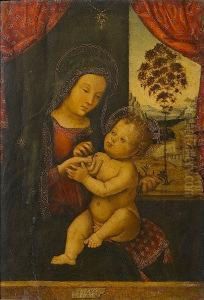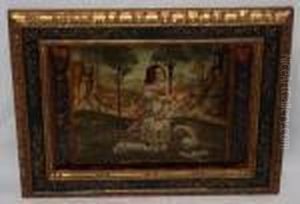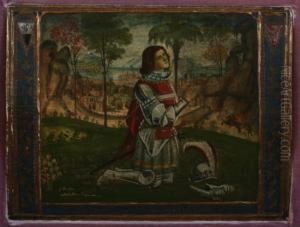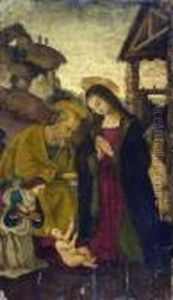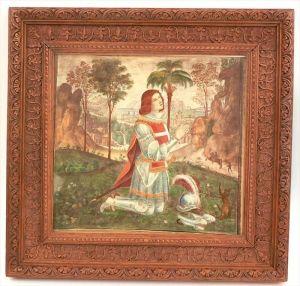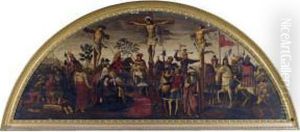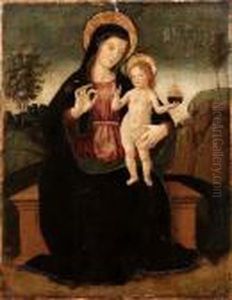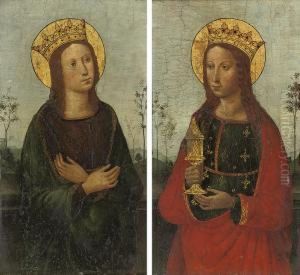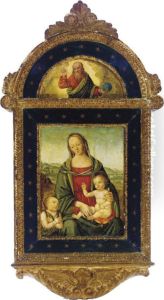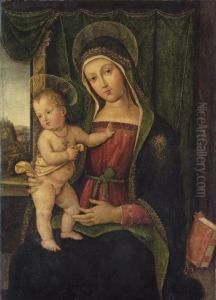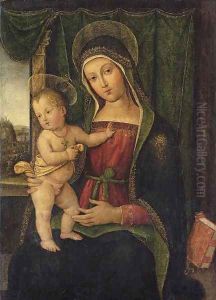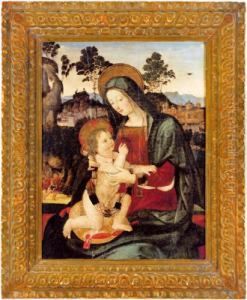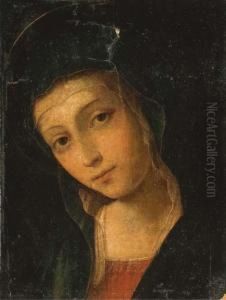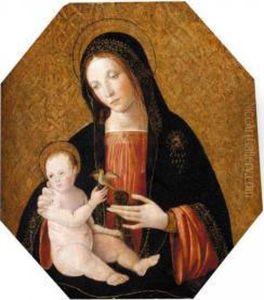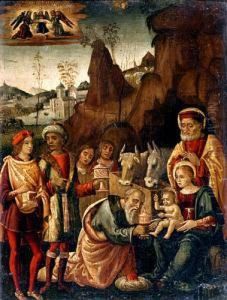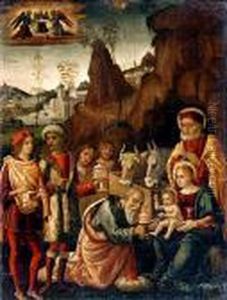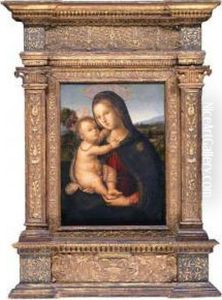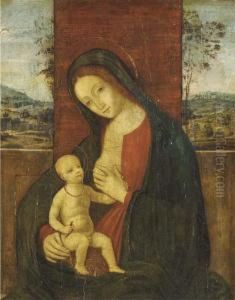Bernardo Pintoricchio Paintings
Bernardino di Betto, better known as Pintoricchio or Pinturicchio which means 'little painter' in Italian, was an Italian Renaissance painter born in Perugia. He was a prominent artist of the Umbrian school and was active during the late 15th and early 16th centuries. Pintoricchio's work is noted for its decorative style and intricate detail, which is characteristic of the art of the period.
Pintoricchio initially trained under the guidance of Fiorenzo di Lorenzo, and his early works show the influence of his master as well as that of Perugino, another leading Umbrian artist. He achieved recognition for his own distinctive style, which combined a love of ornamental detail with clear, harmonious compositions.
In 1481, Pintoricchio was called to Rome by Pope Sixtus IV to work on the frescoes of the Sistine Chapel, where he collaborated with other eminent artists of the time, including Perugino and possibly even Michelangelo. His contributions to the Sistine Chapel include the frescoes of the Baptism of Christ and the Journey of Moses.
After his work in the Sistine Chapel, Pintoricchio’s reputation grew, and he received numerous commissions from the Catholic Church and secular patrons. One of his most famous works is the decoration of the Borgia Apartments in the Vatican, commissioned by Pope Alexander VI. These rooms are a testament to Pintoricchio’s skill in creating complex narrative frescoes filled with rich detail and vibrant colors.
Pintoricchio's later works include the frescoes in the Libreria Piccolomini in the Cathedral of Siena, which are considered some of his masterpieces. These frescoes depict the life of Pope Pius II and showcase Pintoricchio's ability to weave intricate scenes filled with numerous figures and architectural perspectives.
Throughout his career, Pintoricchio remained a prolific artist, producing altarpieces, portraits, and mythological scenes alongside his fresco work. Despite facing competition from other great artists of the Renaissance, he maintained a successful workshop and left behind a body of work that has been admired for its elegance and visual storytelling.
Pintoricchio died in Siena in 1513, leaving a lasting legacy as one of the key figures in the Italian Renaissance whose works continue to be studied and appreciated for their beauty and historical importance.
